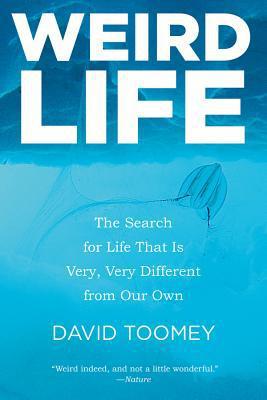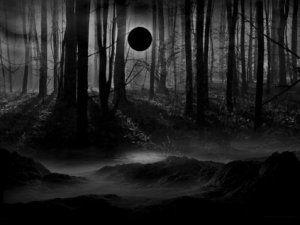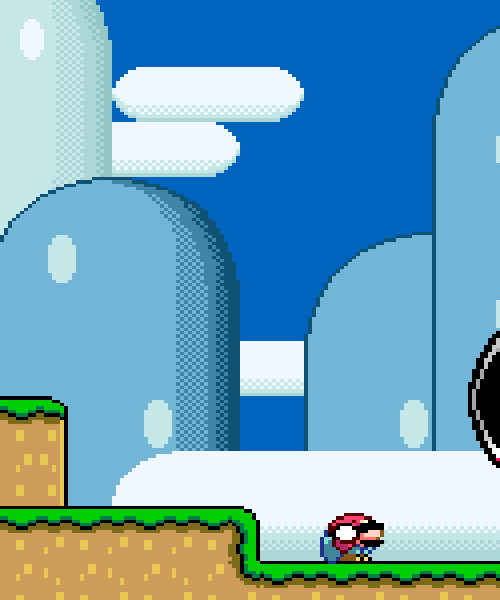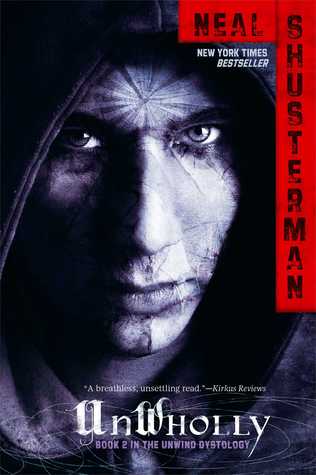 Weird Life: The Search for Life that is Very, Very Different from Our Own by David Toomey is a book with a self-explanatory title that suggests wonder and discovery. It does not disappoint.
Weird Life: The Search for Life that is Very, Very Different from Our Own by David Toomey is a book with a self-explanatory title that suggests wonder and discovery. It does not disappoint.
Weird life is defined as being life that does not share a common ancestor with any of the life currently known on Earth. As in, it is life with a completely separate origin story from our own.
Toomey starts by asking two primary questions that he will go on to answer in depth in the main body of the book. What can we say about weird life? Also, would we recognize it if we saw it?
To answer the first question, he begins by describing the study of the “weirdest” known forms of familiar life: that enigmatic group known as extremophiles. These are creatures which can survive at extreme temperatures (within pockets of ice or boiling hot springs), in highly acidic or alkaline lakes, in salty brine, or in the extreme pressures at the bottom of the ocean (to name just a few places). Weird life may take on characteristics that extremophiles are already known to possess: unique biochemistries or chemosynthetic metabolisms. Toomey then explains the current search for a potential “shadow biosphere” on Earth (life that may have separate origins from all other life). Biologists have hypothesized three possible ways for such a biosphere to exist alongside life as we know it: ecologically separate (inhabiting extreme niches that familiar life cannot), ecologically integrated (existing in small numbers in inconspicuous trophic niches within a familiar microbial community), or biochemically integrated (living in close-knit relationships with familiar life, as the mitochondria in our cells were once separate bacteria which achieved symbiosis with larger microbes). Toomey explains in detail biologists’ search for weird life, using specific stories from the scientific community.
To answer the second question, Toomey begins by describing efforts to define life itself as well as hypotheses of its genesis.
After this point, the two primary questions are combined in subsequent chapters. Toomey narrates the search for life beyond Earth, mentioning specific missions (carried out or planned) to places like Mars or the moons Titan and Europa and the Kepler mission to search for extrasolar planets. He also talks about experiments designed to detect life, and how the most basic way to look for life is probably by searching for locations of chemical disequilibrium. The attempts to locate and define weird life shift from concrete scientific papers and missions to speculation (the later chapters deal with the work of SETI and its search for radio signals from potential intelligent life, weird life proposed by science fiction authors, and eventually the myriad hypotheses associated with the possibilities of multiverses).
Toomey answers his two primary questions very well and very thoroughly, using a huge range of material (hard science to imaginative postulating). Weird Life covers a lot of ground in this manner, trading detail on specific scientific hypotheses for accessibility to the reader. The tone is one of curiosity: this is a subject filled with wonder and imagination and does not disappoint on that front. It doesn’t take itself too seriously, though: Toomey does insert some notes of self-aware humor (in later chapters he has the occasional aside where he admits that he’s getting a little wild with his hypothesizing but that this isn’t meant to be only a hard-science book). Too much humor or too much seriousness wouldn’t do the subject matter justice, so he strikes a good balance.
Toomey is not a biologist or physicist, and so perhaps doesn’t have the strongest possible qualifications for writing on this subject matter (the “about” section describes him as a professor of English and technical communication) but it is clear he is proficient enough to handle the work. He has excellent writing credentials, is obviously practiced at interviews (as he includes personal interviews with scientists within the book), and seems good at building comprehensive understandings of his research (at several points he goes into broad meta-analyses of different hypotheses, including reactions within the scientific community to different papers).
Because of the presence of meta-analyses in early chapters (such as that of the Wolf-Simon paper, which was a paper that claimed to discover evidence of arsenic-utilizing microbes which received derision in the scientific community), I would’ve liked to have seen more such analyses in later chapters. This would’ve been especially enlightening in the chapter on life postulated by science fiction writers. Is there a scientific reaction to such speculations? This could’ve used more elaboration.
There were also a few things that didn’t quite fit with the overall tone or material of the book. The last chapter, on possible weird life in proposed multiverses, didn’t quite mesh with the rest of the book. It was overly long and overly speculative. It was a very interesting piece of work, but parts of it would’ve been better used in a separate essay or written in less detail. There is also a gallery of images stuck about halfway through the book. Like the last chapter, they are interesting in and of themselves but don’t really fit well with the book itself. They aren’t referenced in the text and most of them look easy to find with simple image searches. The cover of the book itself is misleading. I have a version with a photograph of a ctenophore (or comb jelly) floating through water beneath a layer of ice. To someone who knows about marine biology, the image of the ctenophore is inappropriate (the book does not mention them, a form of familiar life, at all). A more appropriate cover would probably be sulfur hot springs, microbes, or even a picture of one of the potentially habitable moons in our solar system.
I would personally recommend Weird Life to anyone interested in the prominent subject matter: astrobiology, unfamiliar organisms in science fiction, biology/biochemistry, and extremophiles. It touches on all of these subjects and relates them to the overall topic in creative, interesting ways and so is a good introduction to all of them for general readers. It relates its material in a fun, easy to understand writing style and is a quick read relative to other nonfiction books, so not a major commitment to anyone looking for some interesting reading material.
So, if you want to inject a little wonder into your reading life, I encourage you to pick up Weird Life.
To readers: do you have any recommendations or suggestions for similar books? Have you read Weird Life? I’d love to discuss!
All information from Toomey, David. (2013). Weird Life: The Search for Life that is Very, Very Different from Our Own. W. W. Norton & Company.
*note: cover image from Goodreads <https://www.goodreads.com/book/show/17986429-weird-life >
Advertisements Share this:





